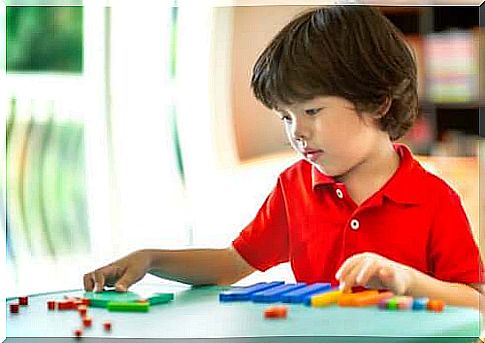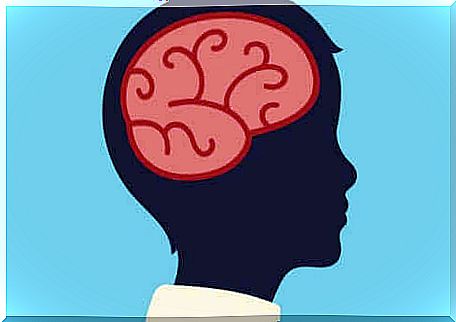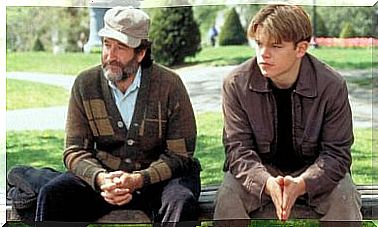The Stage Of Concrete Operations In Piaget’s Development

The stage of concrete operations is part of the theory of development proposed by Jean Piaget, whose discoveries were fundamental in the evolution of positive psychology. According to him, the child’s thinking has unique characteristics that will vary depending on the stage of maturation and the interaction with the environment.
In this article, we tell you how the logic of a child who enters the stage of concrete operations works. You will find out what his worldview looks like and what problems he is capable of solving.
Piaget’s theory of cognitive development
The Swiss psychologist Jean Piaget completely revolutionized the theories of child development and the concept of intelligence retained until then. With his theory of development, he questions the idea that children are less competent thinkers than adults or that they are molded at the mercy of the environment.
This is what we thought until the 1940s. But Piaget demonstrated by ingenious experiments that infantile thoughts were not inferior to those of adults, jute totally different.
With his theory of development, he described infants as “little scientists” who actively operate with the environment. They experiment and modify their thinking based on their findings.
For Piaget, children construct a series of mental representations of the world according to their stage of maturation. By interacting with the environment, they observe the gaps between this mental map they have and the reality they perceive. This allows them to gradually modify this conception.

The stage of concrete operations
Piaget has divided his theory of development into four main stages. The sensorimotor stage, the pre-operative stage, the concrete operative stage and the formal stage. All children go through these stages in the same order. Their thinking grows in complexity and abstraction over time.
According to Piaget’s theory, the stage of concrete operations takes place between the ages of seven and eleven. However, the author recognizes the existence of great individual and cultural variability.
This third stage of developmental theory is considered fundamental since it is considered the beginning of a logical or operational reflection in the child. At the stage of concrete operations, the child has acquired sufficient biological maturity to begin to function through periods.
That is, this stage is characterized by the development of logical thinking that no longer needs so much physical manipulation. In addition, it allows much more flexible thinking, not based solely on the appearance of objects.
According to Piaget’s experiments, a child at the stage of concrete operations could mentally classify a series of sticks by size. And this, without needing to physically manipulate them.
Serialization, classification and preservation
According to Piaget’s theory of development, at the stage of concrete operations, the child acquires three fundamental operations. They are the following:
- Serialization is the ability to compare items and order them based on their differences. This is necessary to handle concepts such as numbers, time, bars, or orientation.
- For example, a child who has not yet reached the stage of concrete operations has a notion of time in which there is no difference between a minute and an hour.
- Classification is the ability to classify objects based on their characteristics and determine whether they belong to a certain set or to a hierarchy.
- Thus, a child who did not acquire the skills of the concrete operations stage would not understand the hierarchical relationship between man and mammal. In other words, he would not come to understand that all human beings are mammals, and that they are not the only mammals.
- The conservation refers to the fact that an object can remain the same despite changes in appearance. In other words, the redistribution of an element would not affect its characteristics such as its mass, volume or length.
- One possible experiment in this regard might be to show a child a glass of water and then pour it, without varying the amount, into a smaller glass. If we asked a child who has not entered the stage of concrete operations if the quantity of water is the same, he would answer in the negative.

The stage of concrete operations: “the practical child”
Piaget’s theory of cognitive development laid the foundation for current evolutionary psychology. For the first time, a vision of the particular and unique thought of the child was proposed. In addition, the processes of biological maturation and the relationship with the environment underlying the development of mental processes have been described.
During the stage of concrete operations, the child acquires logical notions and benefits from more flexible thinking. The main operations acquired at this stage of concrete operations are serialization, preservation and classification. These three skills will allow him to solve problems in a more systematic way.
This stage is often described as the birth of the “practical child”. This is because the child has taken the previous steps through activities and his intuition. During this third stage, he becomes a practical child who stops learning through trial or error, because he has acquired the logic of a little scientist.










